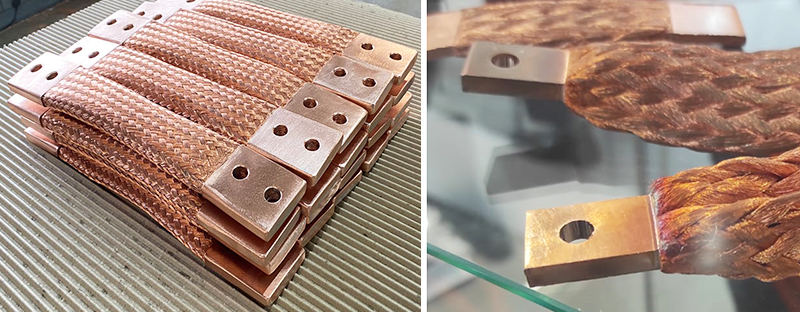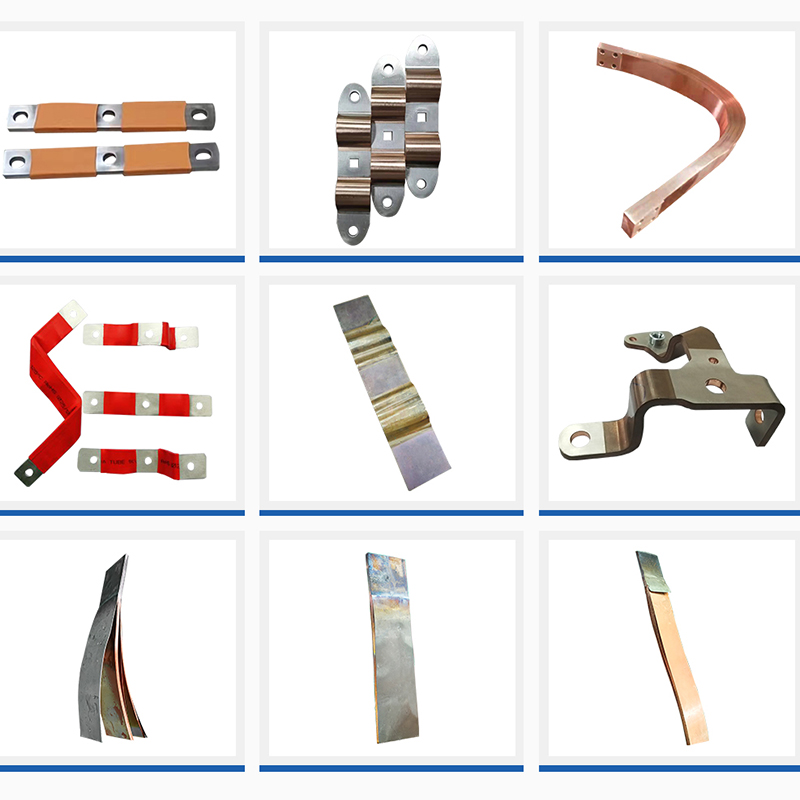Busbars are increasingly used in the current new energy sector, including industries like electric vehicles, energy storage, and power systems. As technology advances, Busbar materials have evolved from copper to copper-nickel, copper-aluminum, aluminum, and graphene composites. These Busbars rely heavily on forming and welding, as they need to connect with batteries, electrical control systems, and other components. Welding at the ends and middle sections is crucial for these connections, with diffusion welding being theprimary method for Busbar forming.
Types of Busbar Diffusion Welding Equipment
There are two main types of Busbar diffusion welding equipment. One is resistance diffusion welding, which directly heats the base material through a high current. The other is high-frequency diffusion welding, where graphite is heated and transfers heat to the base material. Both methods heat the base material to a certain temperature and, under high pressure, form a solid-phase connection, achieving the diffusion welding effect. The heating method used depends on the Busbar material.
Resistance Diffusion Welding
Resistance diffusion welding is mainly used for copper Busbars, as copper has a high melting point and conductivity. To ensure uniform heating and accelerate the process, graphite electrodes are used. The upper and lower electrodes conduct high current to the copper Busbar, heating it through contact resistance between multiple layers of copper foil. The graphite electrodes themselves also generate heat due to their high resistance. This combined heating can raise the temperature of the copper Busbar to over 600°C, reaching up to 1300°C, allowing for successful diffusion welding under high pressure.
High-Frequency Diffusion Welding
High-frequency diffusion welding is suitable for aluminum Busbars, copper-nickel Busbars, copper-aluminum Busbars, and composite Busbars like copper and non-metal combinations. This method uses indirect heating, making it ideal for welding complex materials. In high-frequency diffusion welding, graphite is heated and then transfers the heat to the base material, with temperatures reaching up to 1200°C. Under high pressure, the materials form a solid connection.
Diffusion Welding of Different Busbar Materials
Copper materials are relatively easier to weld due to the stability of their oxides. Thicker copper Busbars, such as those used in power systems, require resistance diffusion welding because of its high heating efficiency. These can be as thick as 50mm with a welding area of 200x200mm. Thinner Busbars, like those used in electric vehicles, typically 3mm thick with a welding area of 25x50mm, can use either resistance or high-frequency diffusion welding.
Aluminum Busbars are more challenging due to aluminum’s melting point (670°C) and the much higher melting point of aluminum oxide (2000°C). For aluminum, high-frequency diffusion welding is usually employed, with the material cleaned beforehand to remove oxides. The diffusion temperature is typically set below 600°C.
Copper-nickel Busbars consist of multiple layers of copper foil with a nickel foil coating for wear and corrosion resistance. High-frequency diffusion welding is commonly used to handle the large difference in electrical resistance between copper and nickel. Composite Busbars, such as copper combined with graphene, require high-frequency diffusion welding to precisely control the heating process and avoid damaging the base materials while achieving diffusion.
Pressure Methods in Busbar Diffusion Welding Machine
Diffusion welding requires high pressure, which can be applied using air-liquid boosters, hydraulic systems, or servo systems. Traditional methods mostly use hydraulic systems for their stable output and high force. Nowadays, servo pressing is increasingly popular for its precise pressure control and adjustable displacement, ensuring high accuracy in the welded product’s dimensions.
Conclusion
This is a brief overview of Busbar diffusion welding. If you are looking for the right welding method for Busbars, this article should provide some answers. With the continuous development of welding technology, more innovative techniques are being adopted to meet the demands of modern society.
Post time: Sep-20-2024









